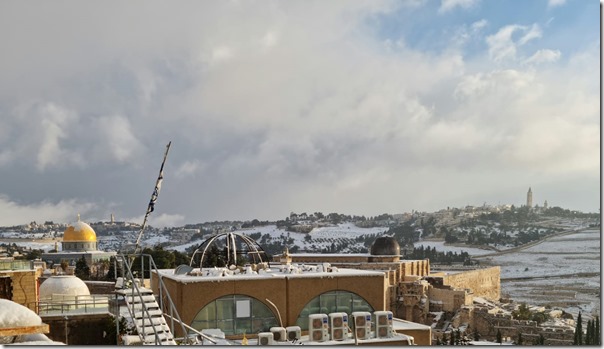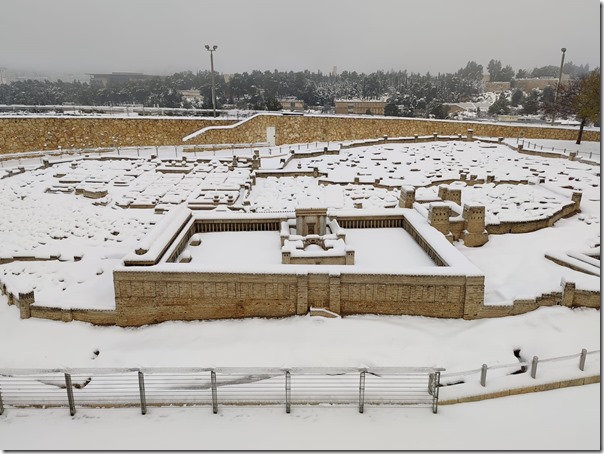“An archaeological study of the floor under the Church of the Holy Sepulchre will be possible for the first time, after a two-year undertaking to repair and restore its pavement stones got underway in an inaugural ceremony on Monday.”
Turkish officials deny the report that Turkey will be returning the Siloam Inscription to Israel. The Jerusalem Post explains the history of this significant artifact.
The discovery of a thousand charred linseed at Tel Burna (Libnah?) has led to the suggestion that the economy of the Shephelah greatly changed after Sennacherib’s invasion.
A carved stele from the 4th millennium was lost in the storage area of the Israel Museum, but now after five years of restoration, it has been put on display for the first time.
Leen Ritmeyer’s post on Capernaum includes a number of beautiful reconstruction drawings.
Ferrell Jenkins is back in Israel and shares a photo of a sunrise over the Sea of Galilee.
A rare March snowfall blanketed Jerusalem and parts of Israel in white this week.
Andrew Lawler’s article for Scientific American on the history of excavations in Jerusalem would have convinced me not to read his book. (I did read it, and it’s much better than some of the revised history he presents here.)
A recent study concluded that “Evangelical Christian travelers would prefer to visit Israel on a trip led by a well-known Christian leader or Bible teacher.”
Video from the 2022 Azekah Conference is now online. You can listen to all seven talks in 1.5 hours.
New release: Excavating the Evidence for Jesus: The Archaeology of Christ and the Gospels, by Titus Kennedy (Harvest House, $25)
On sale at Faithlife: 30 Days in the Land with Jesus: A Holy Land Devotional, by Charles H. Dyer ($5.99).
I am back for part two of “The Babylonian Destruction of Jerusalem” on Digging for Truth (25 min). In this episode I talk about the extensive evidence of the 586 BC destruction, including numerous discoveries in the last five years.
HT: Agade, Joseph Lauer, G. M. Grena, Explorator

